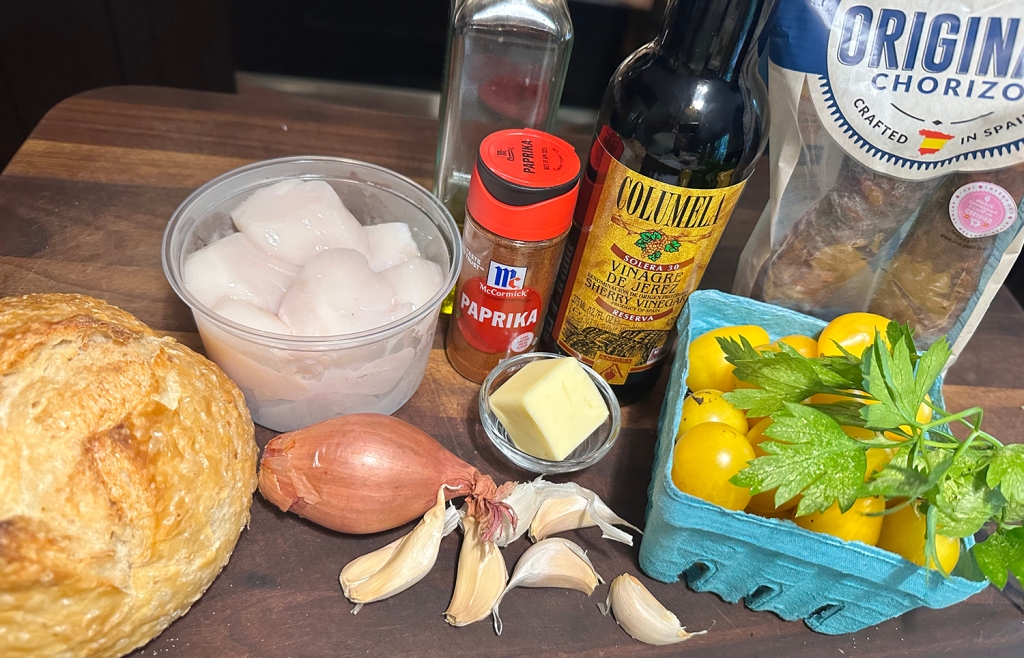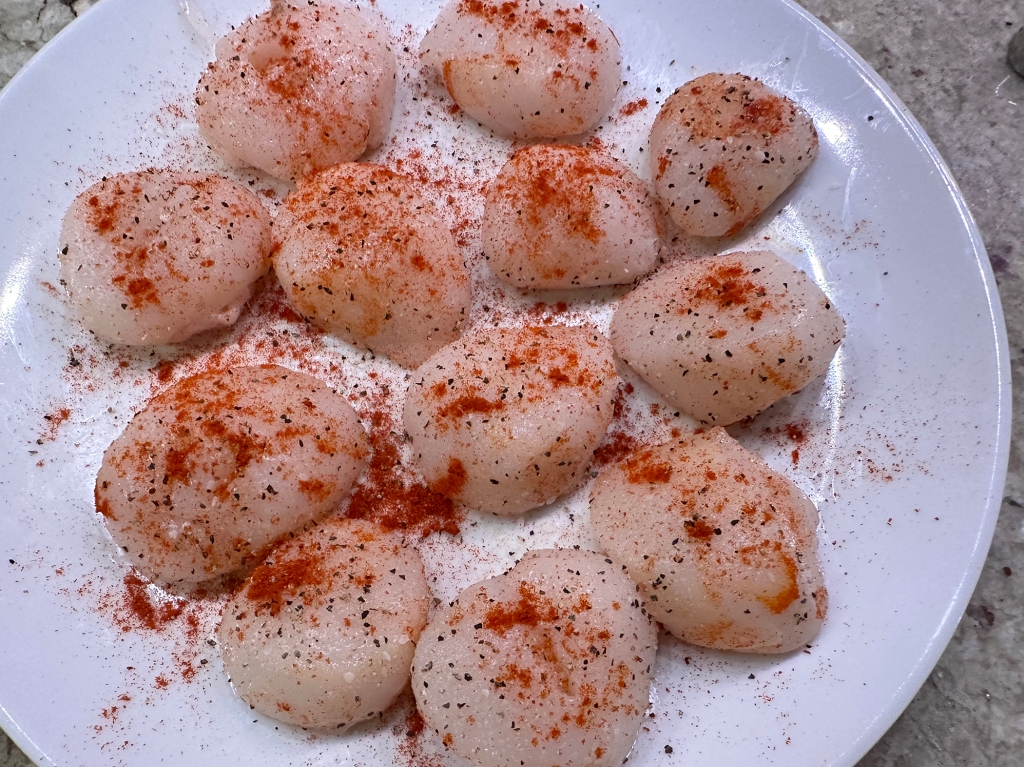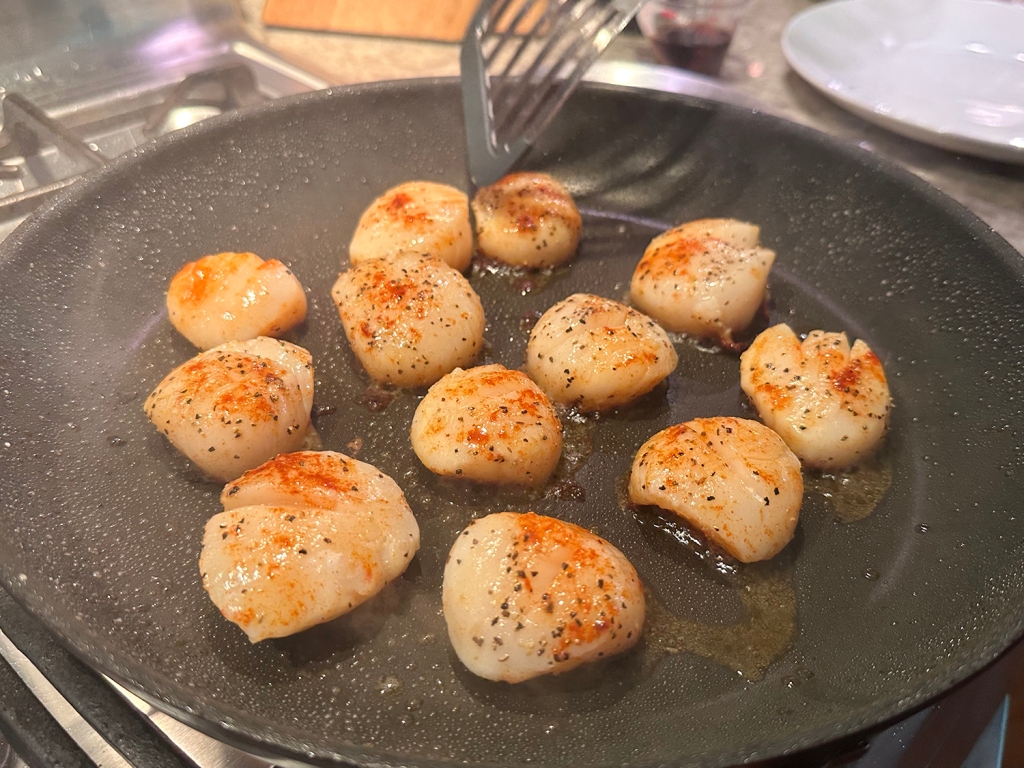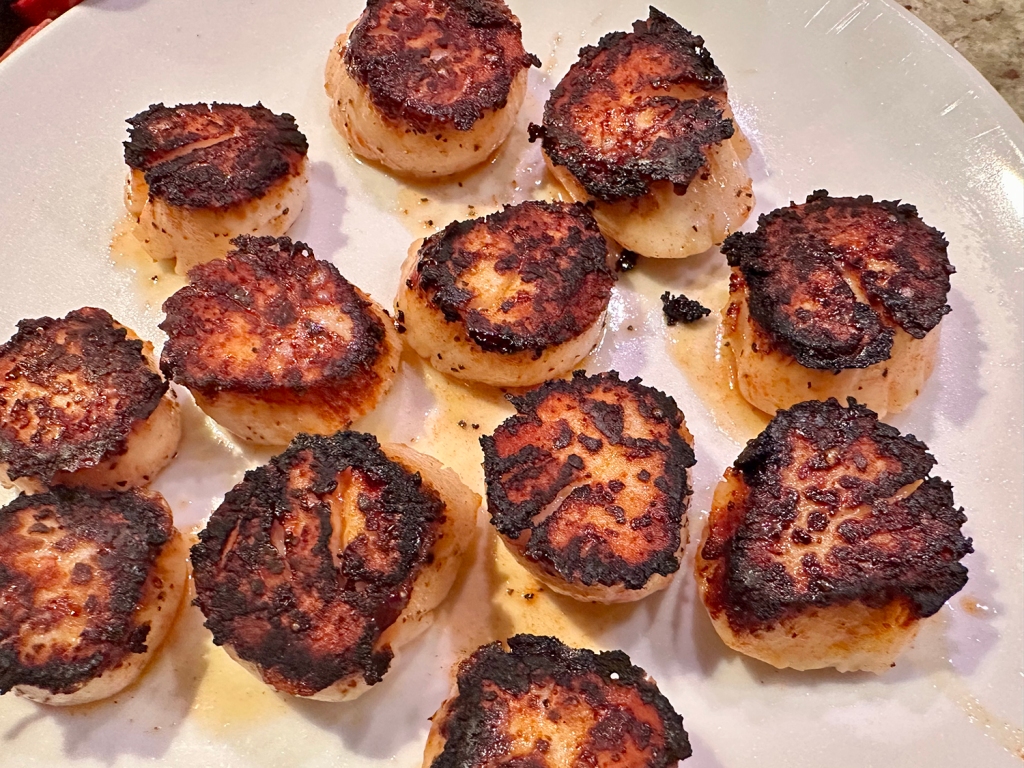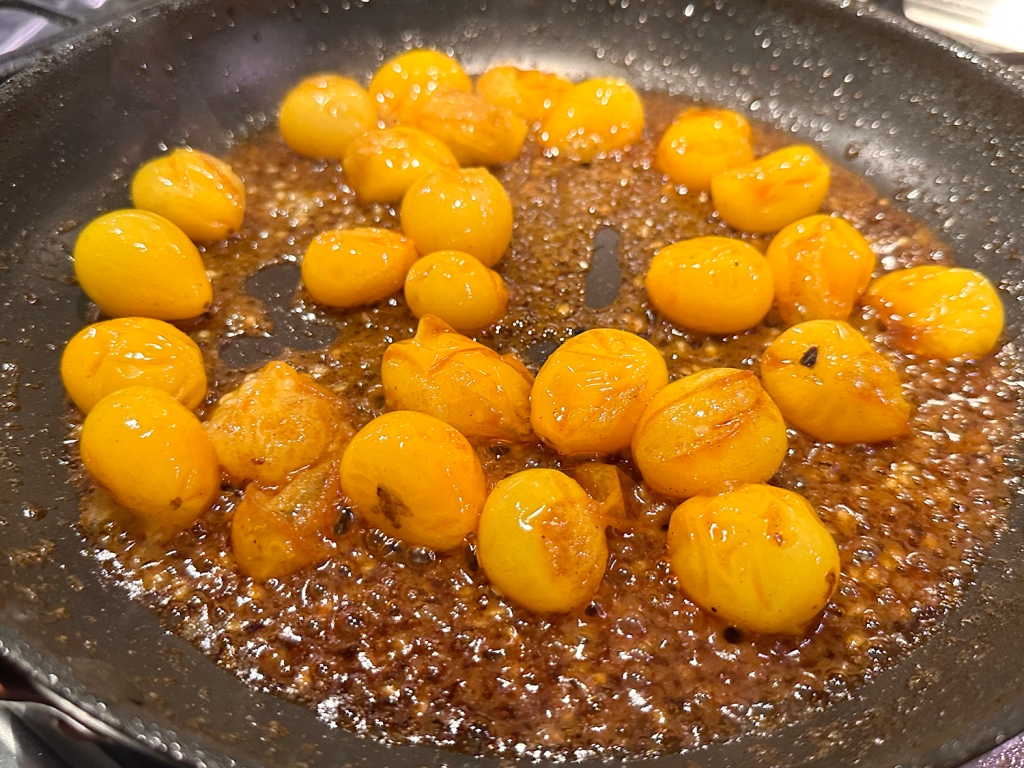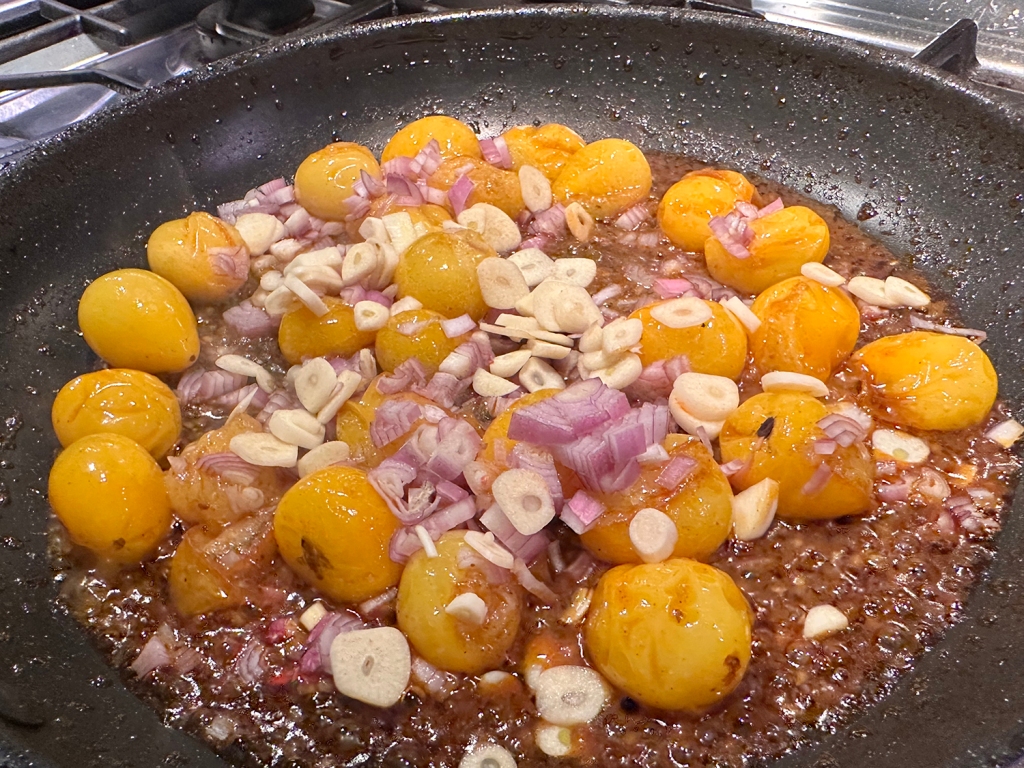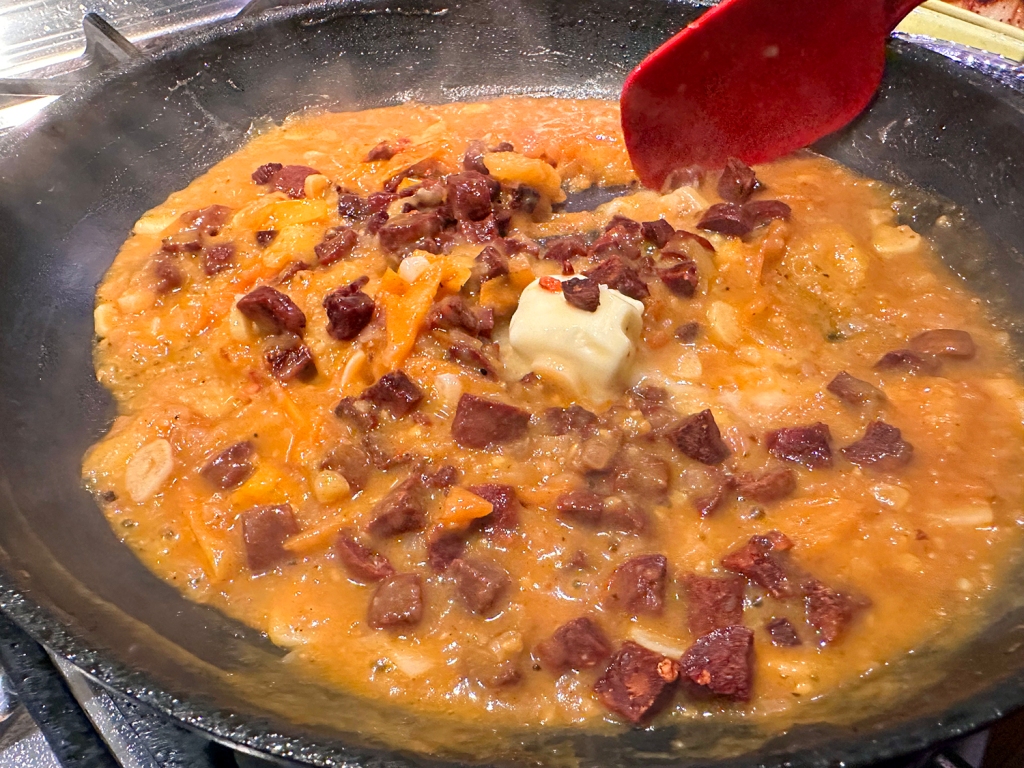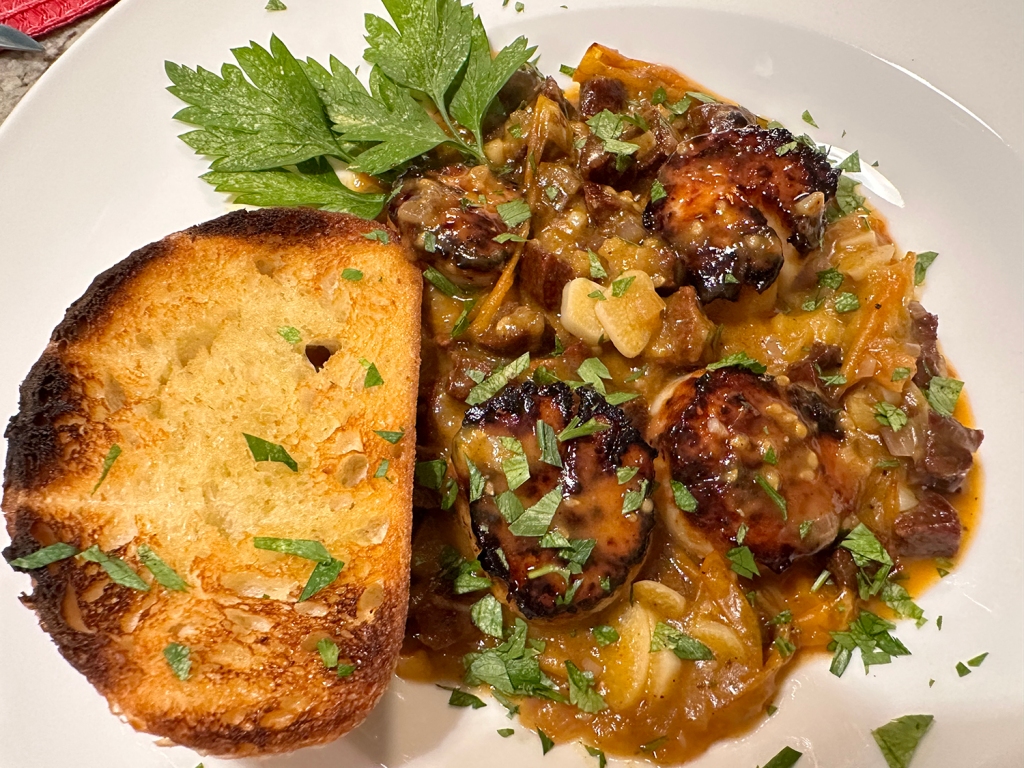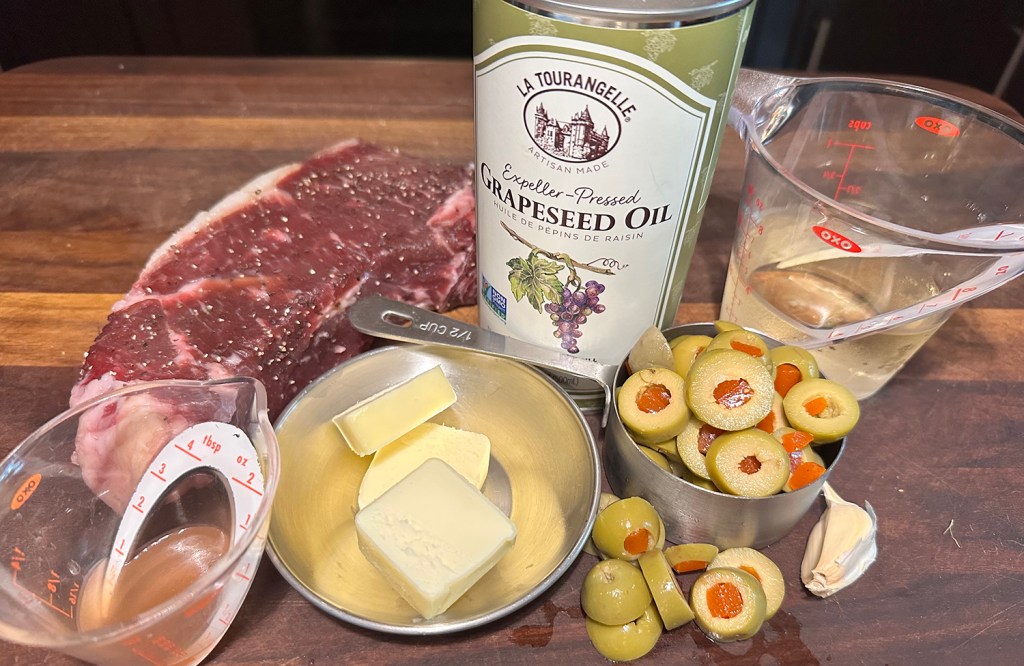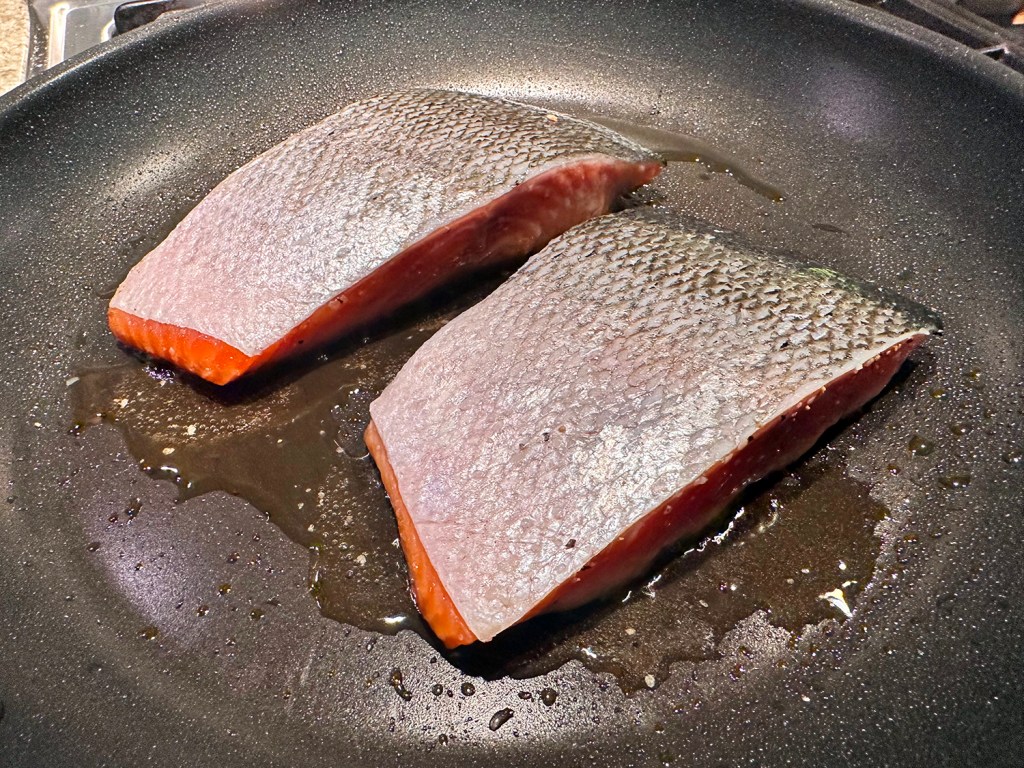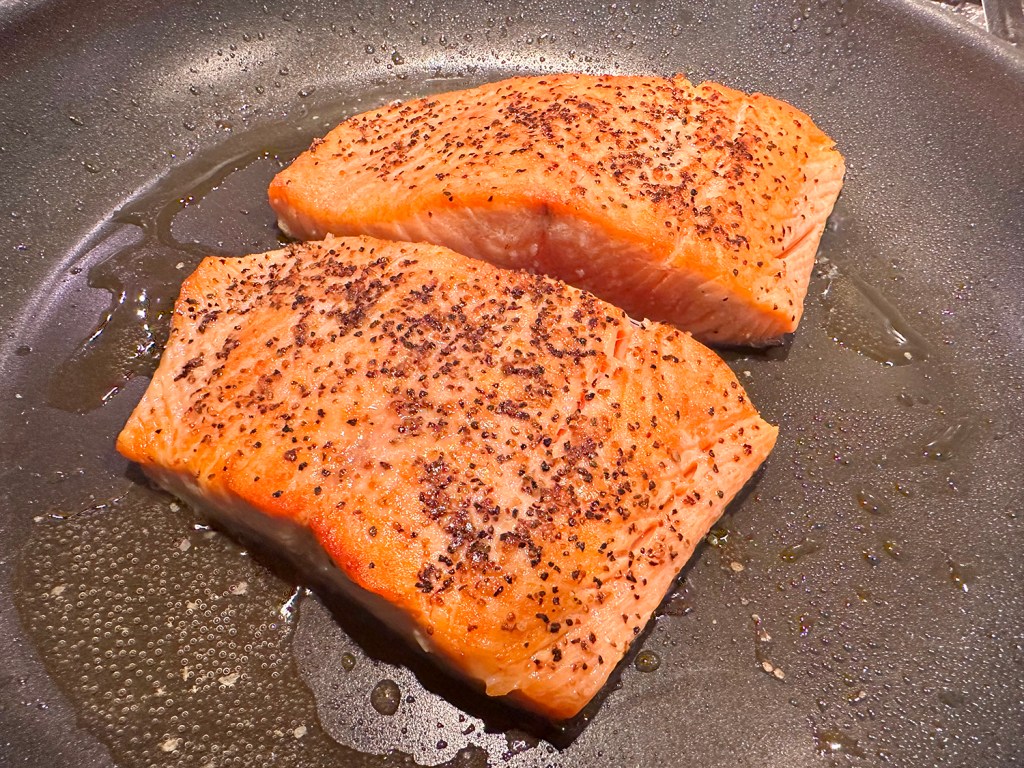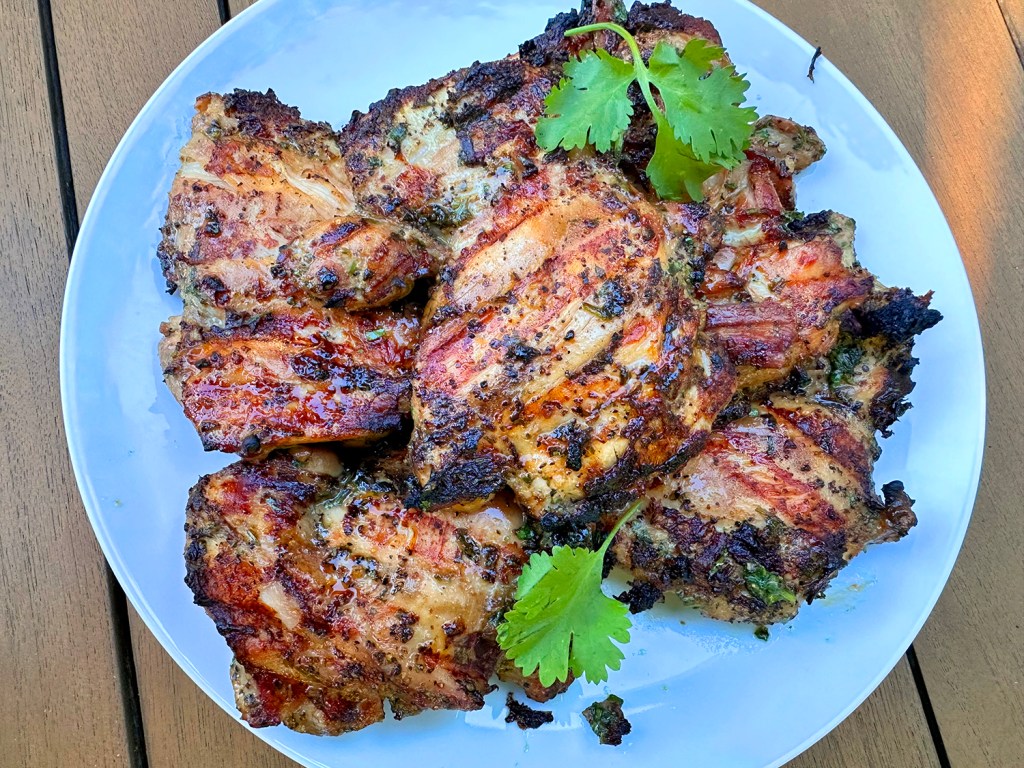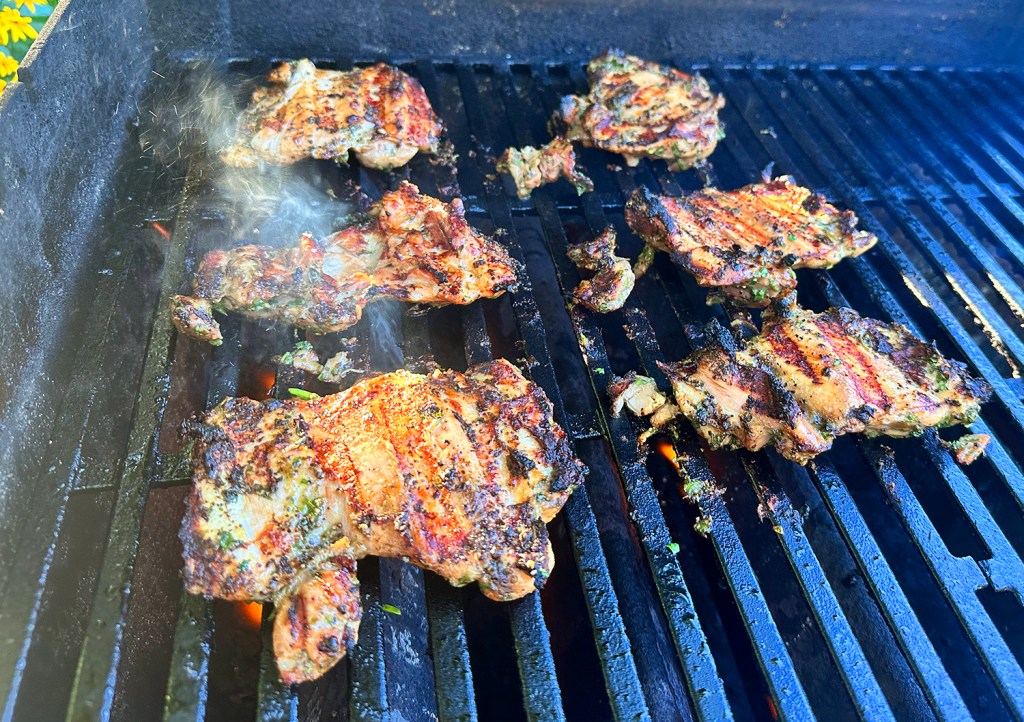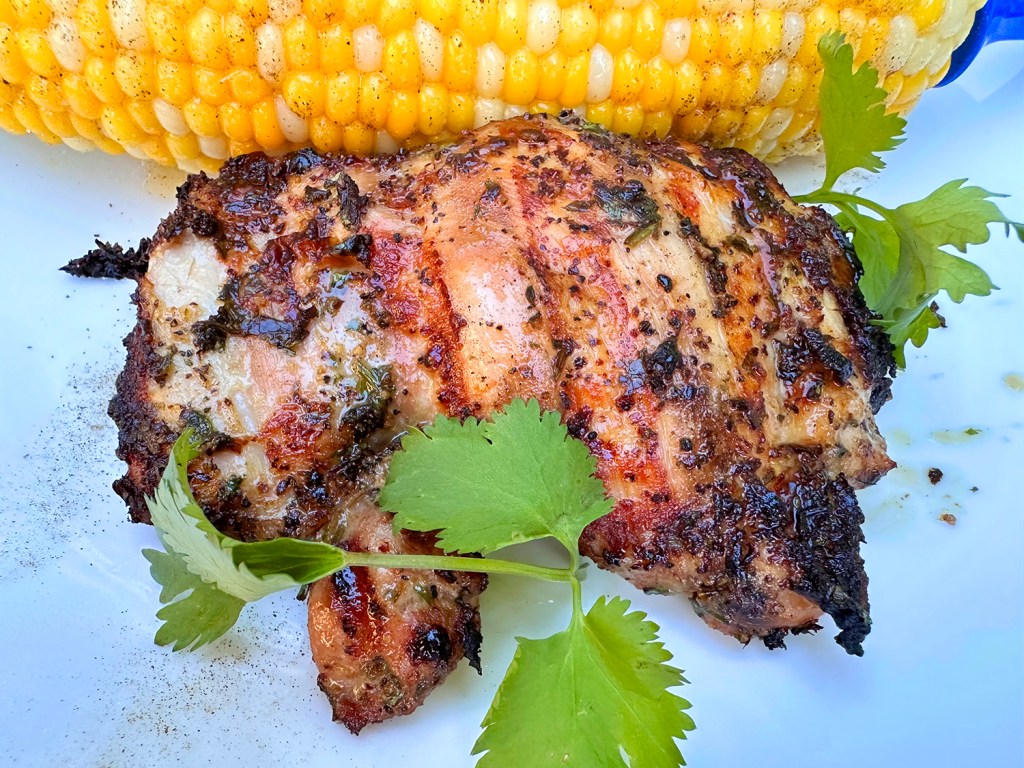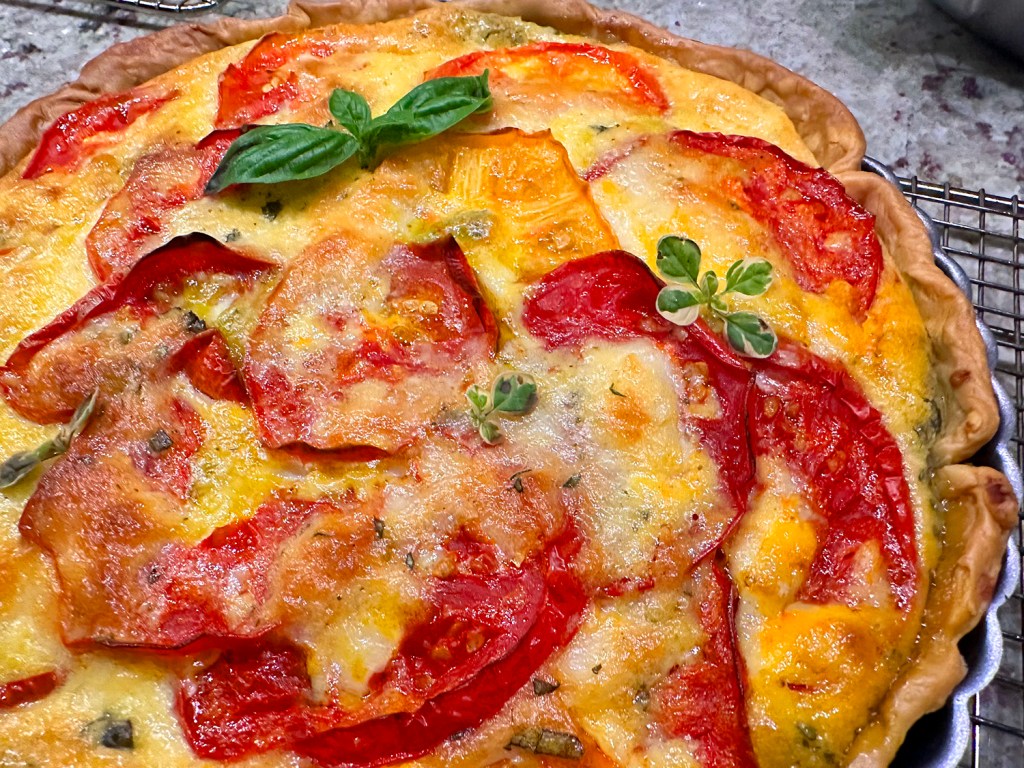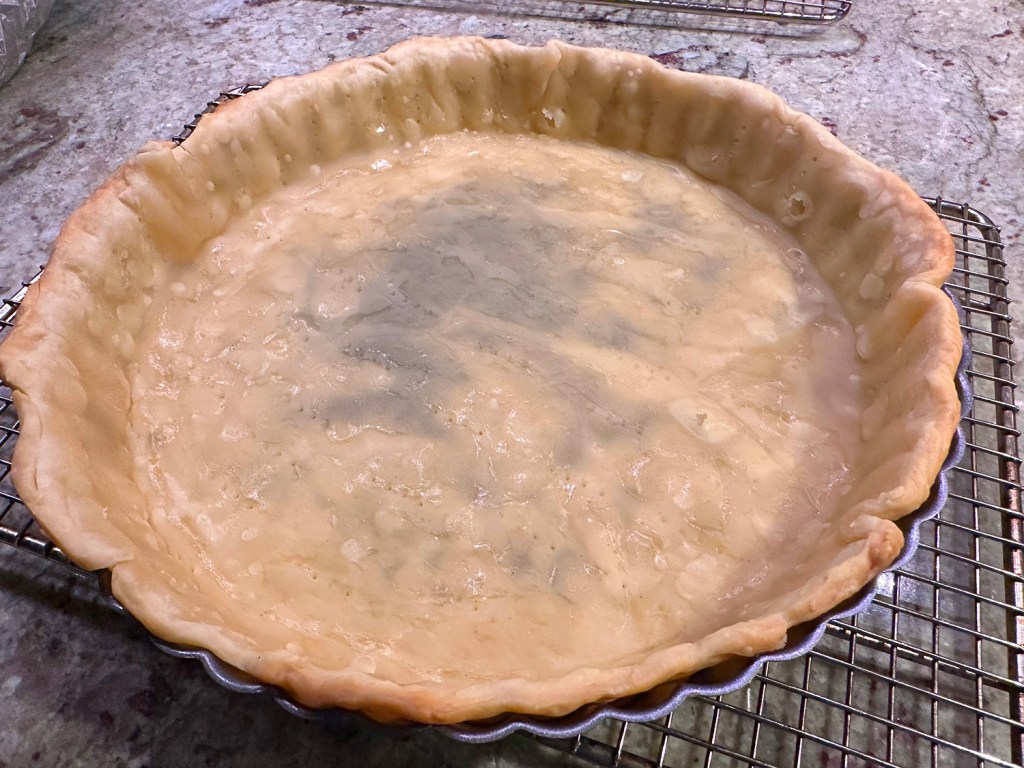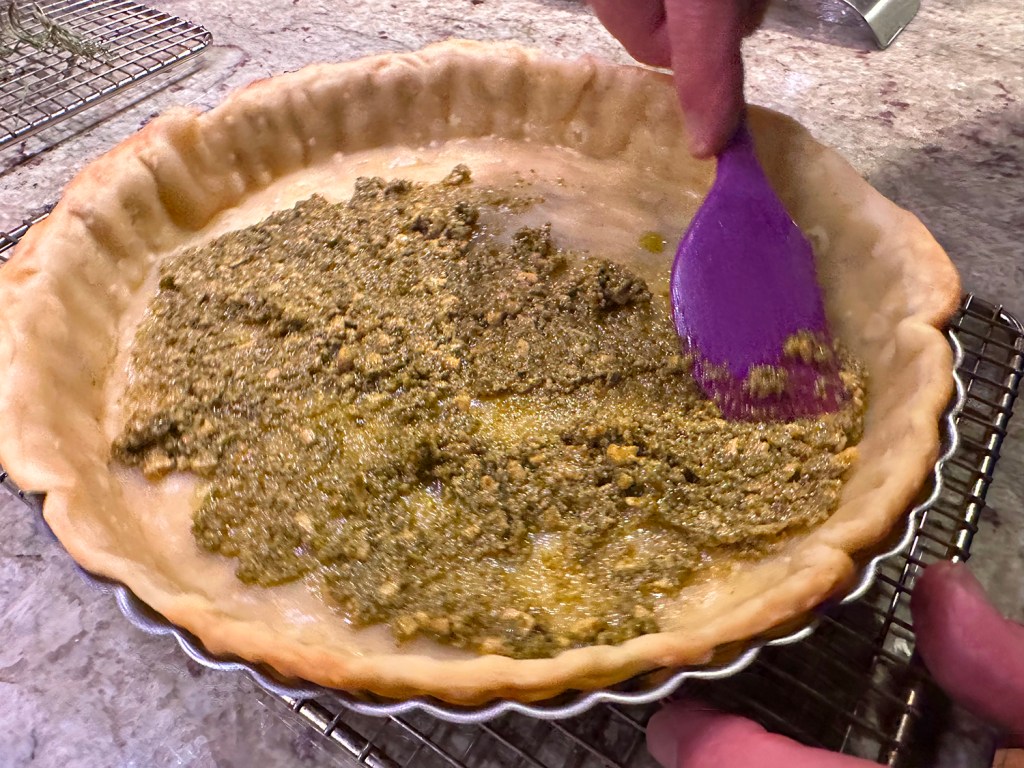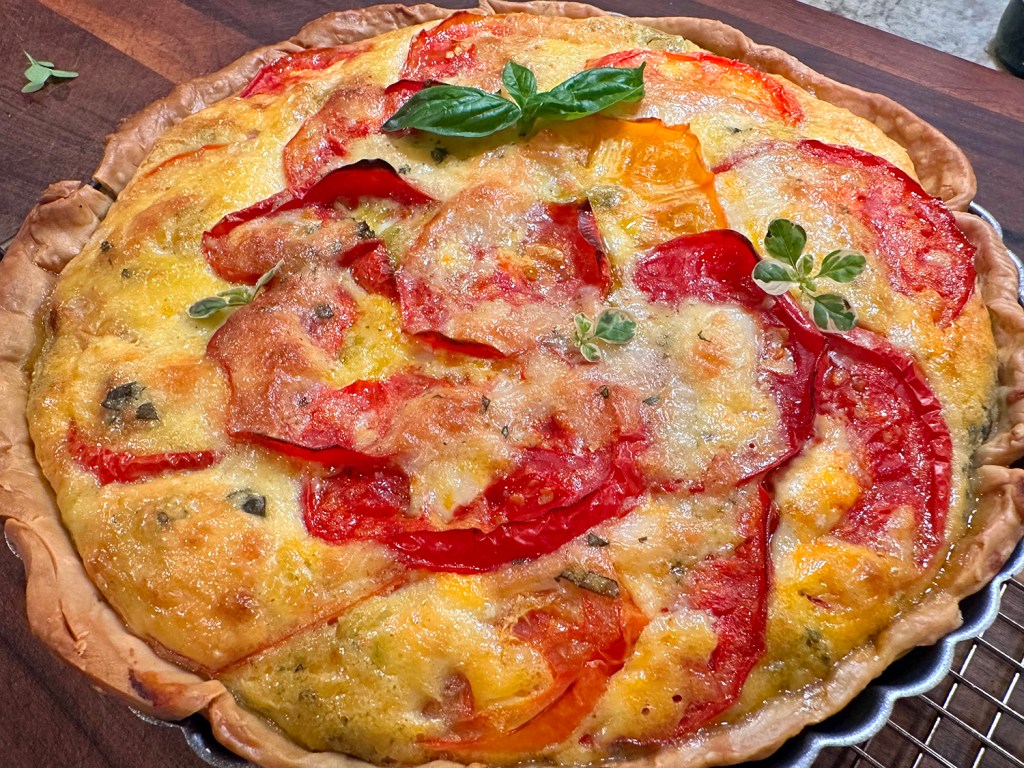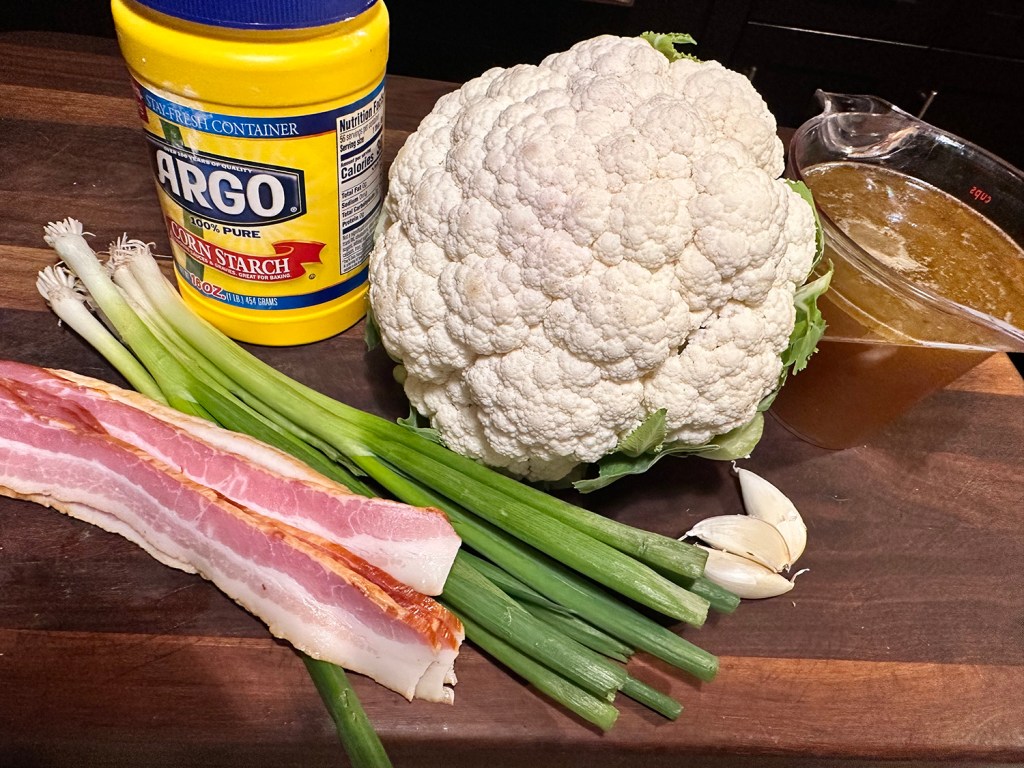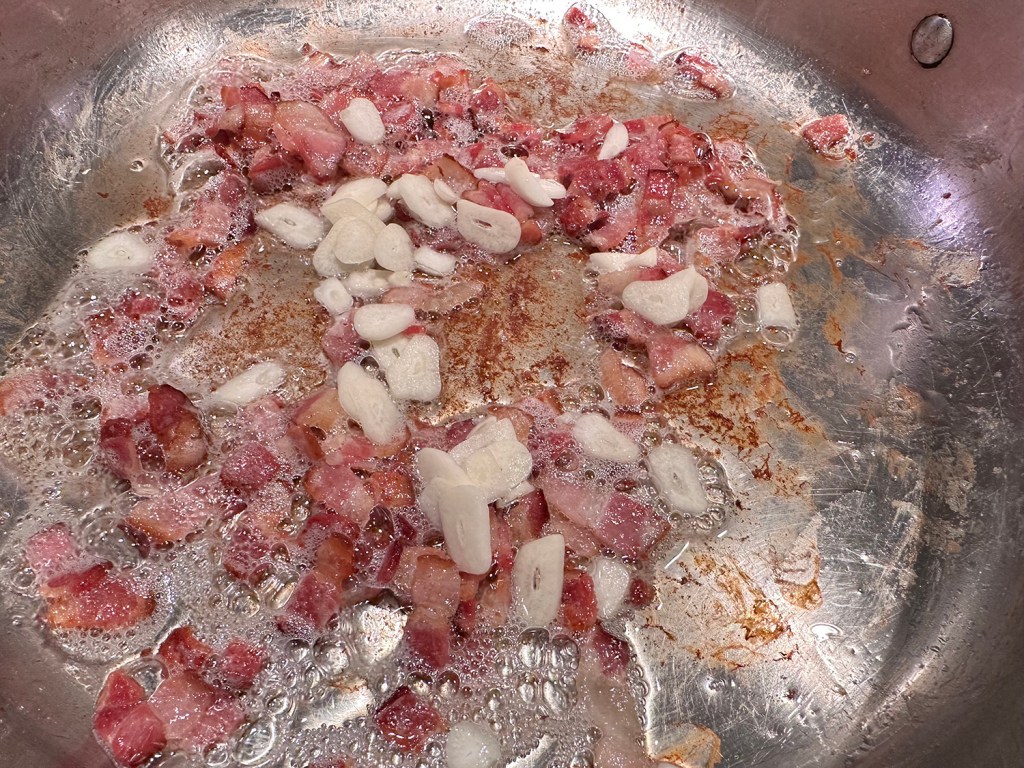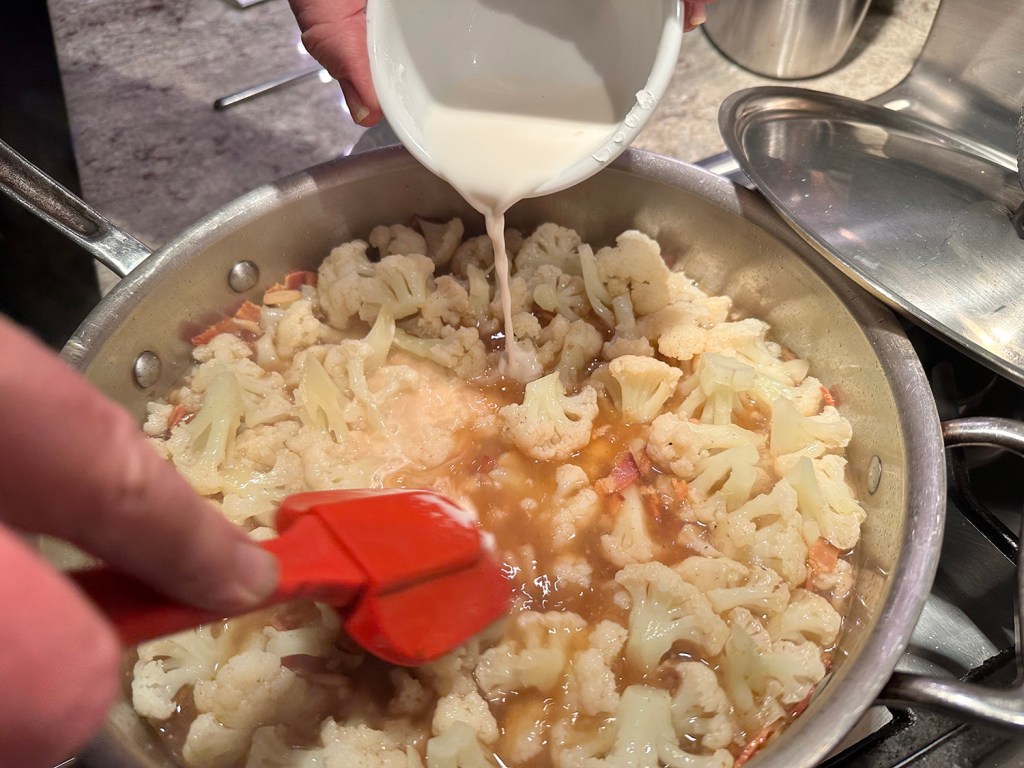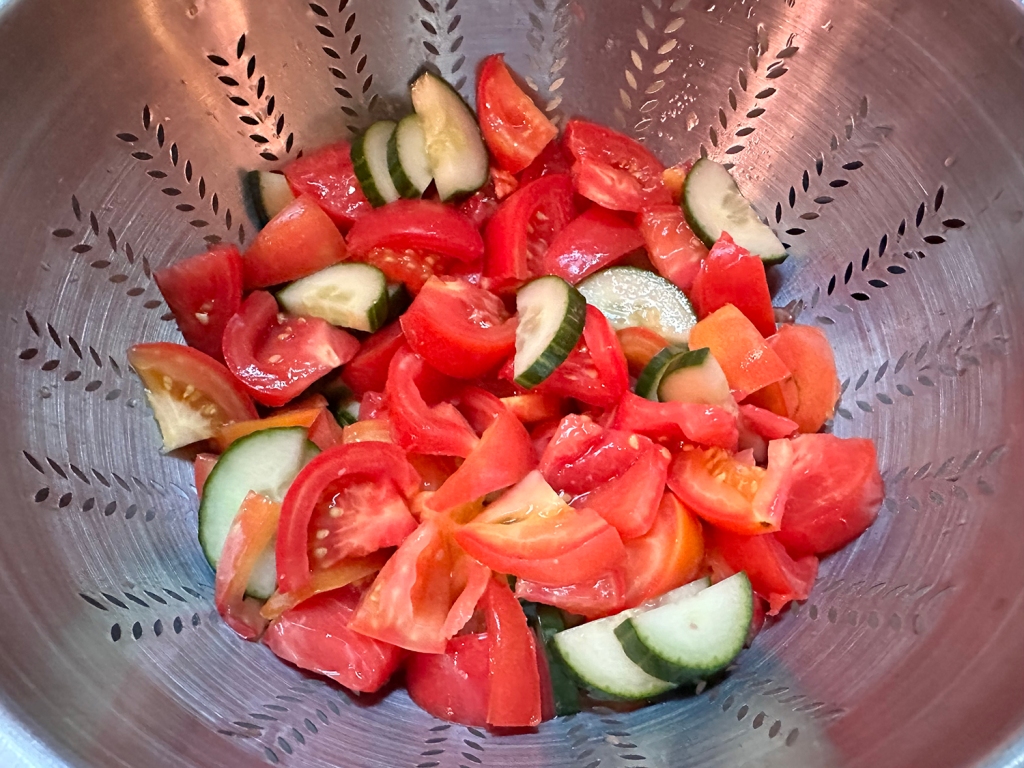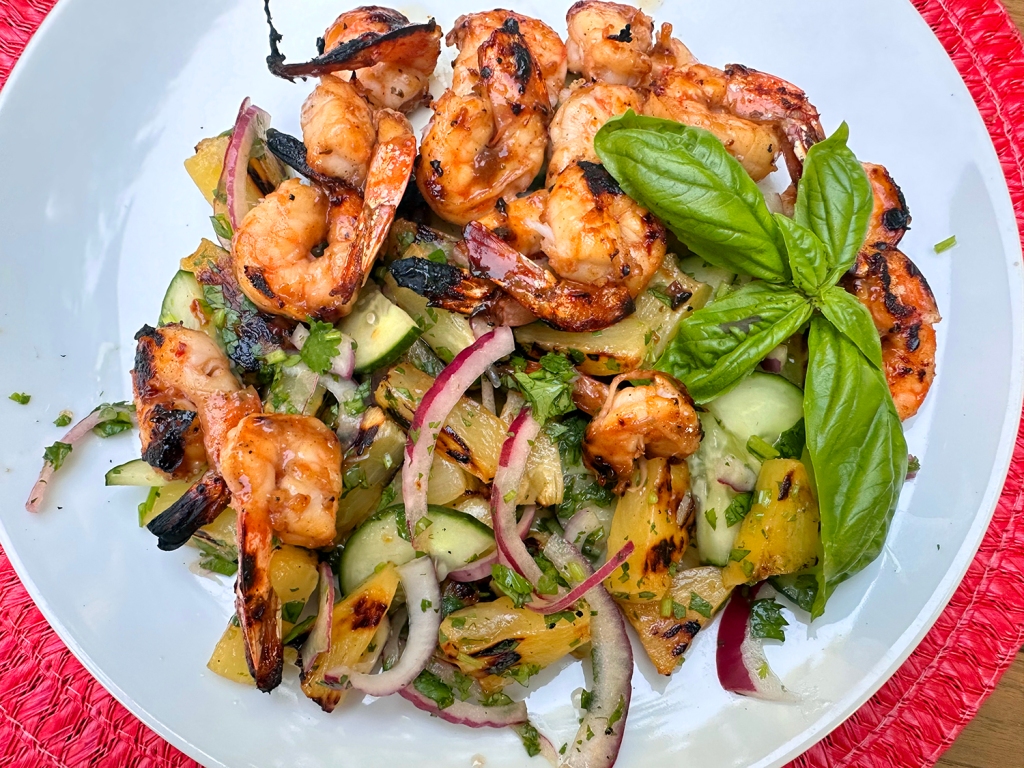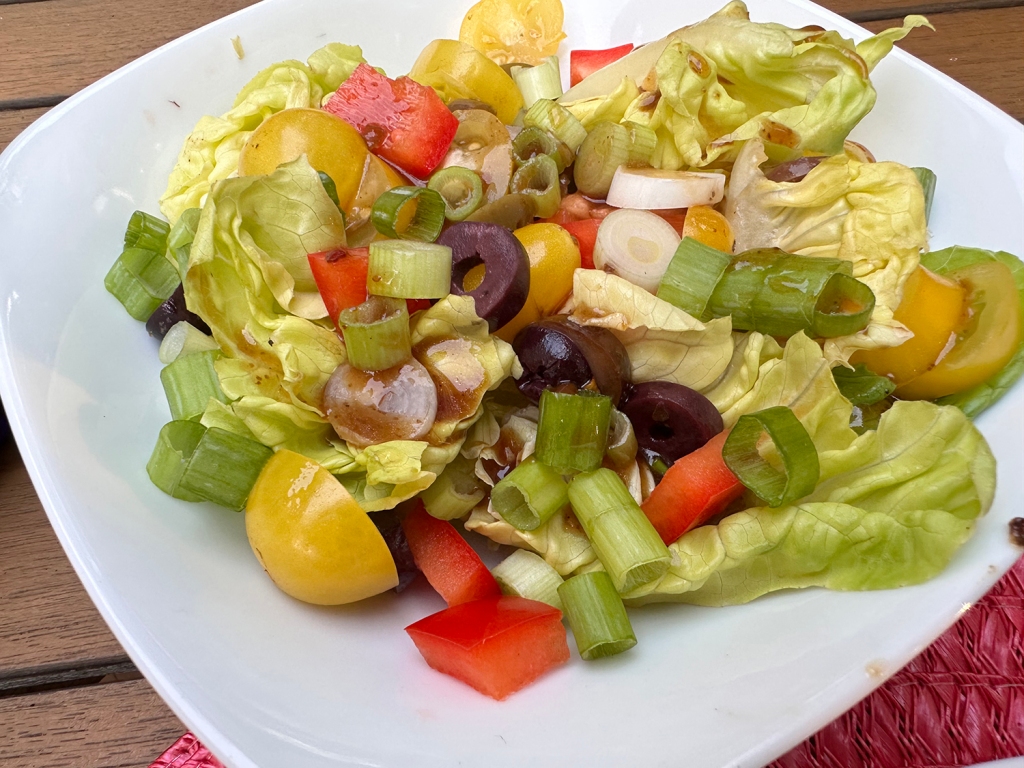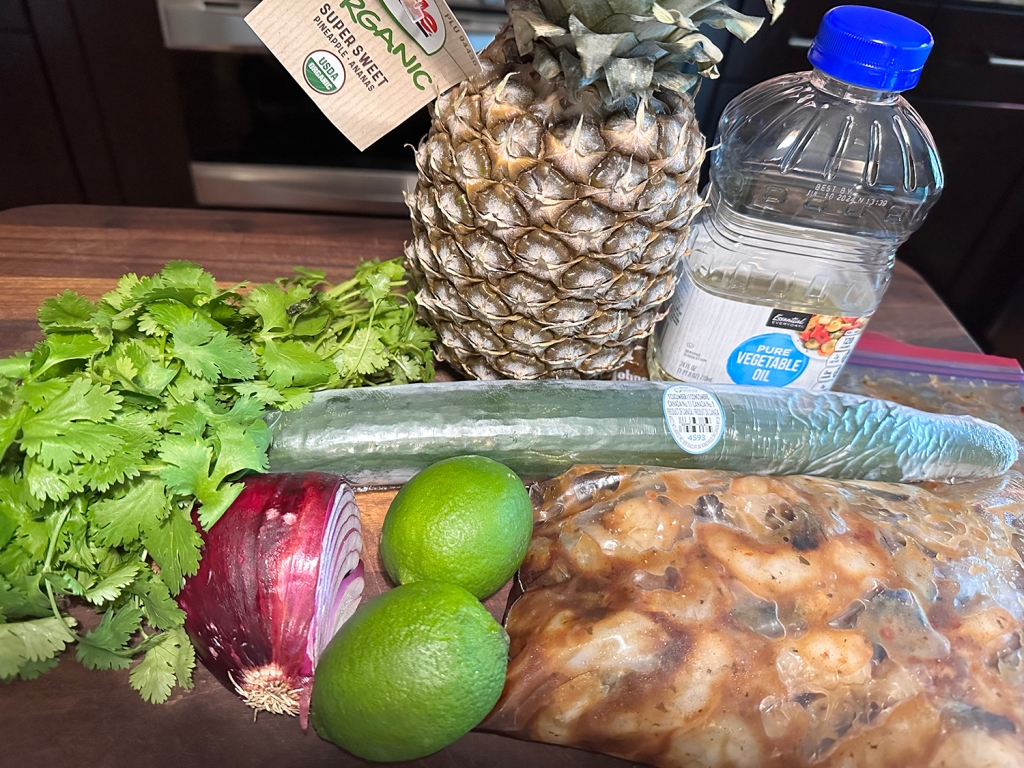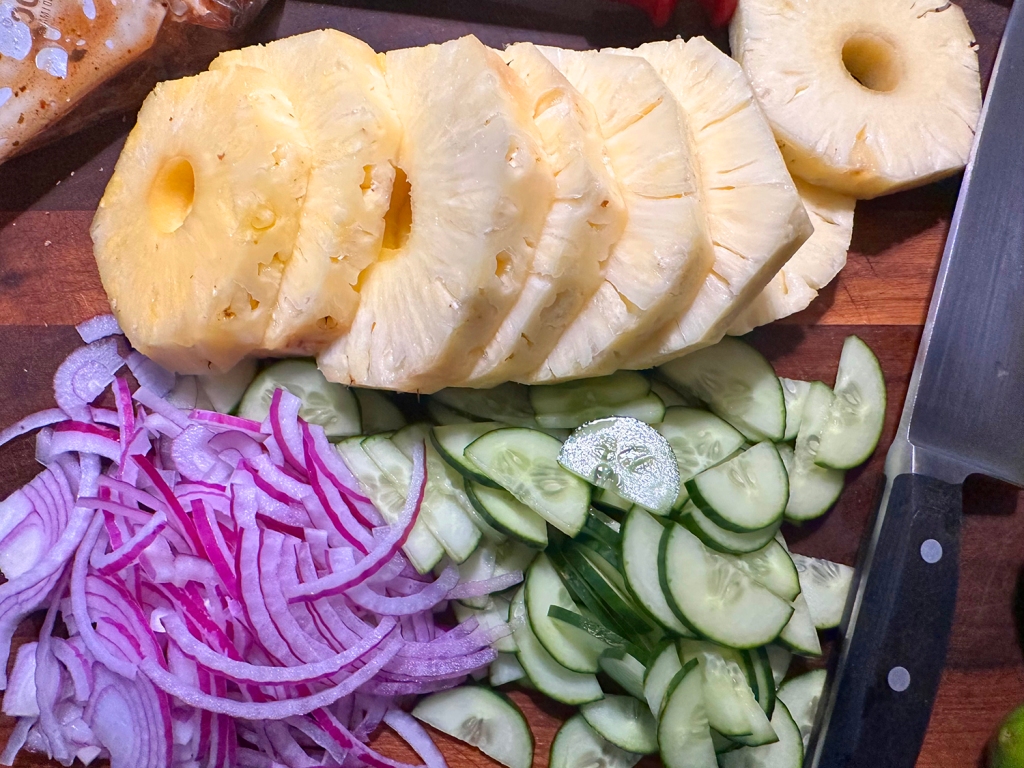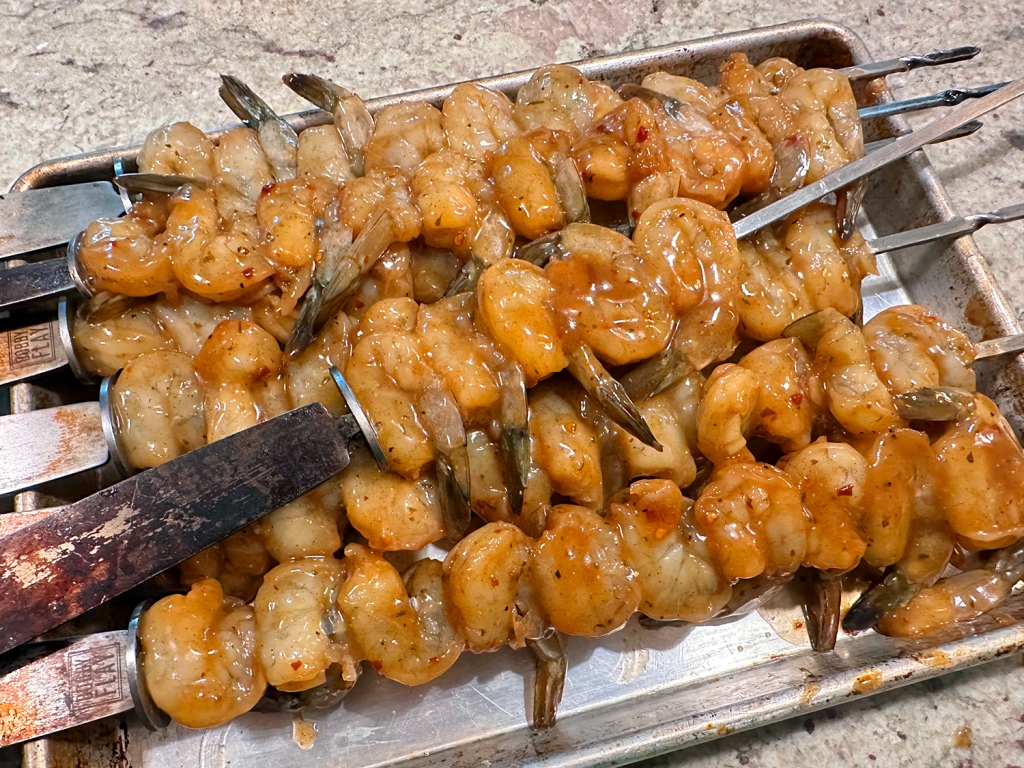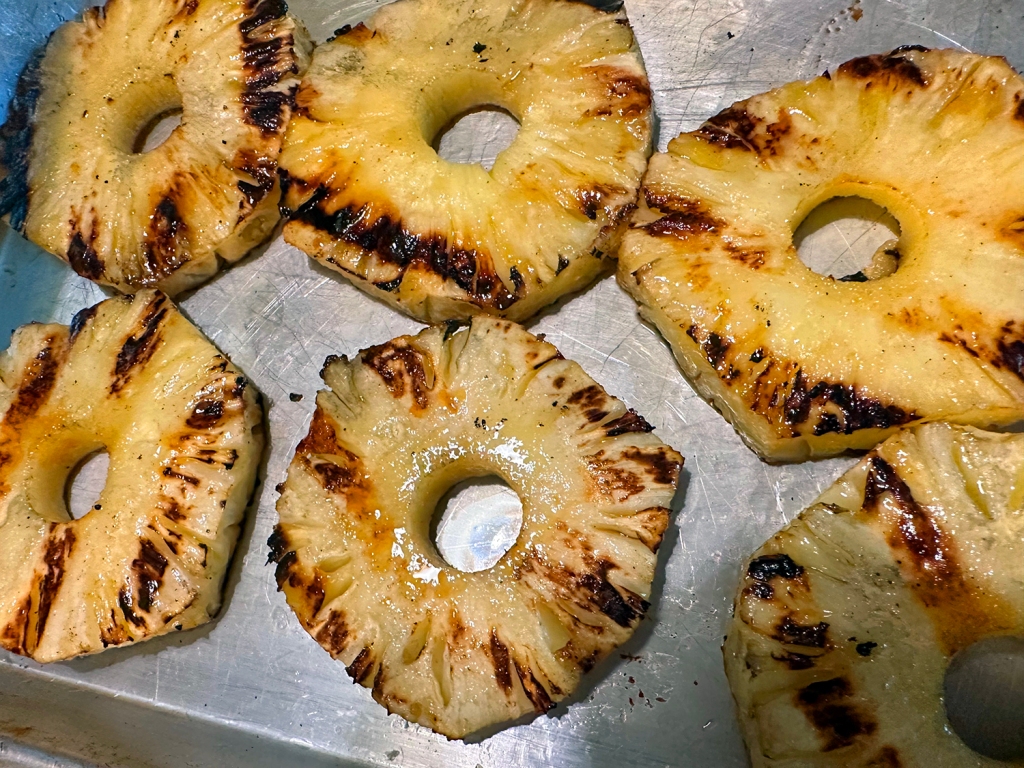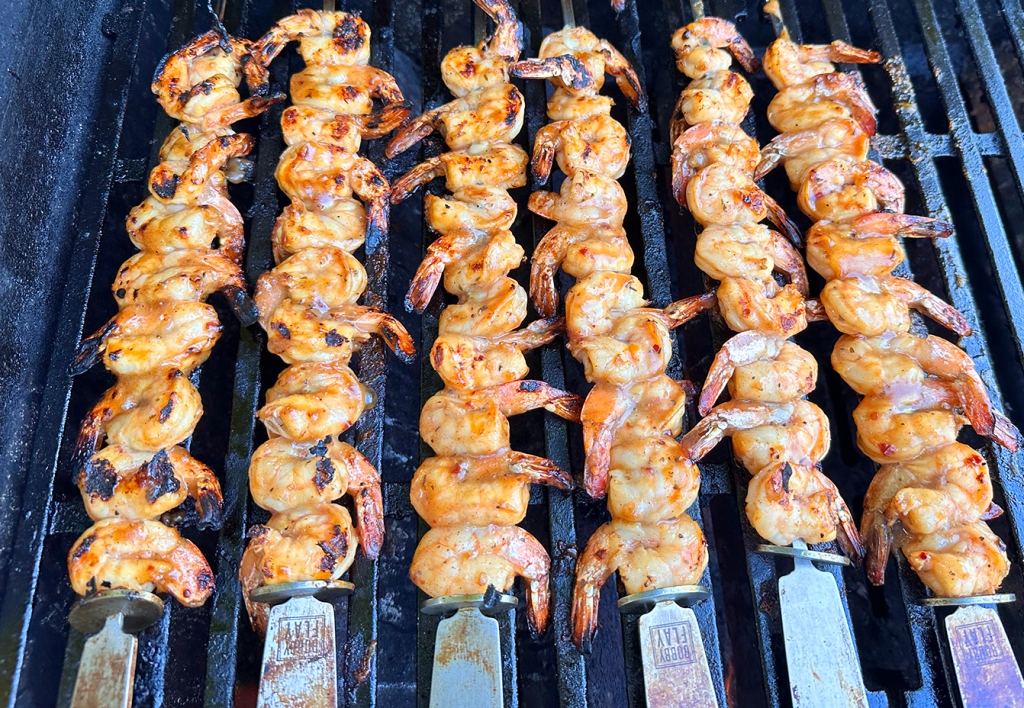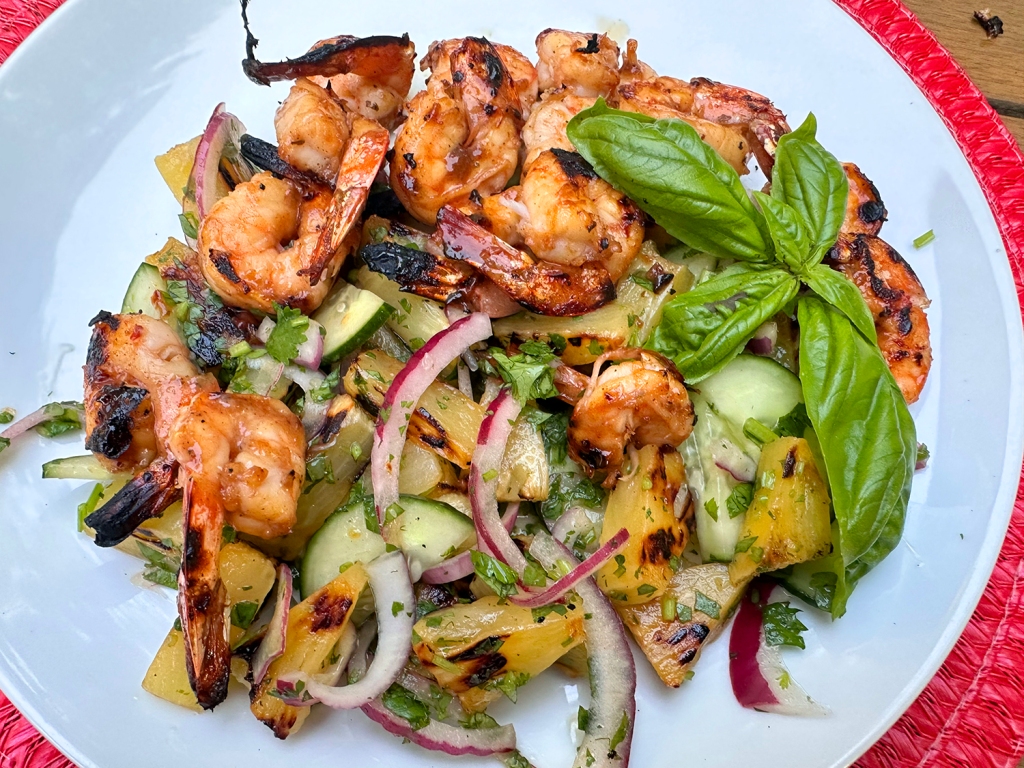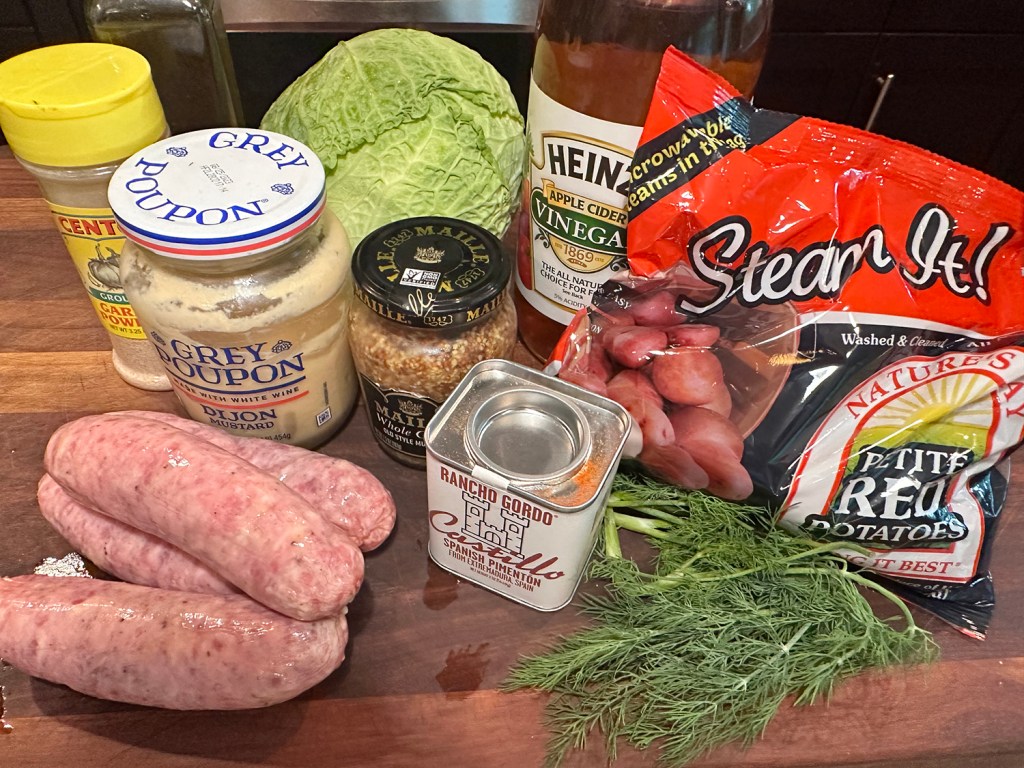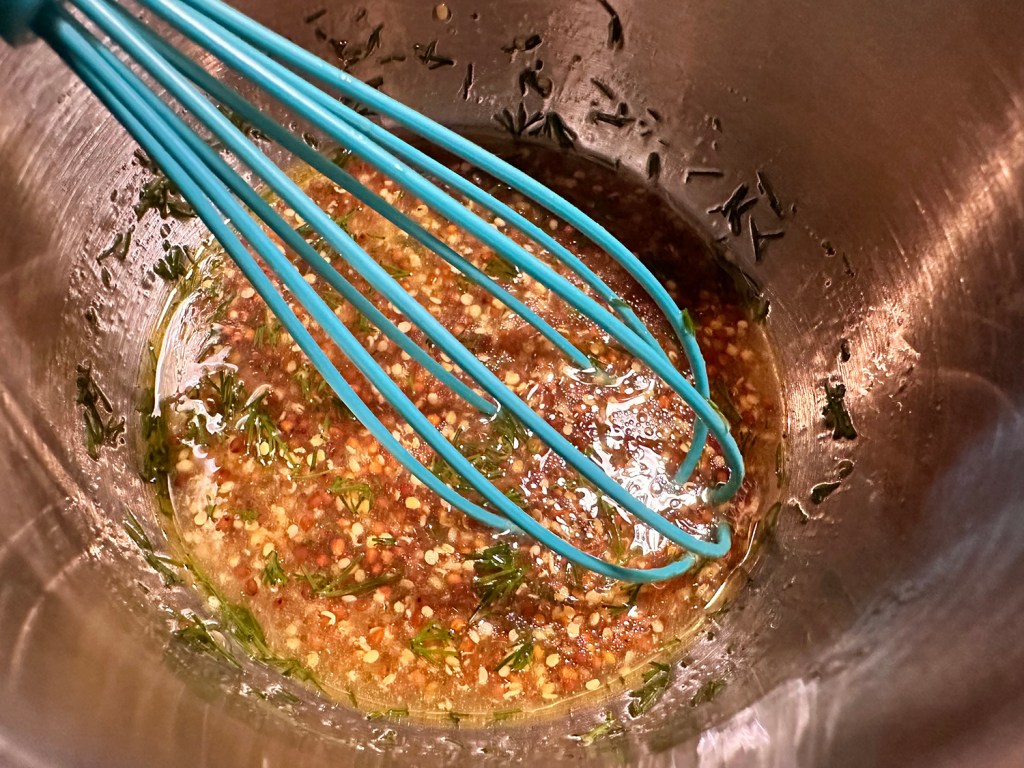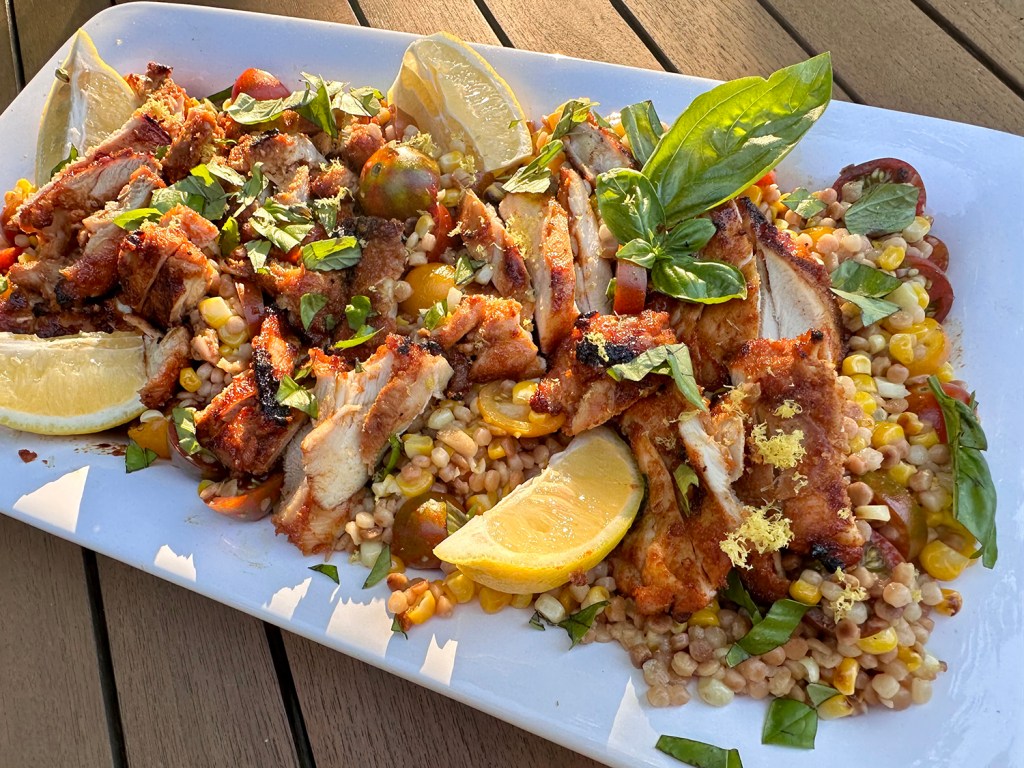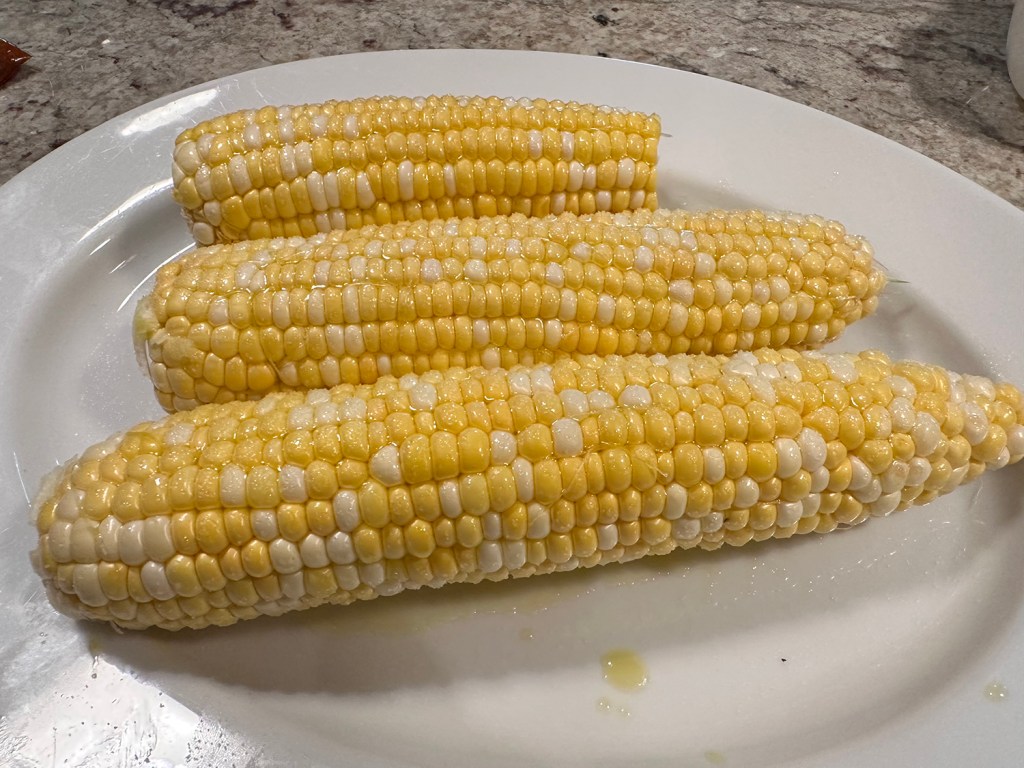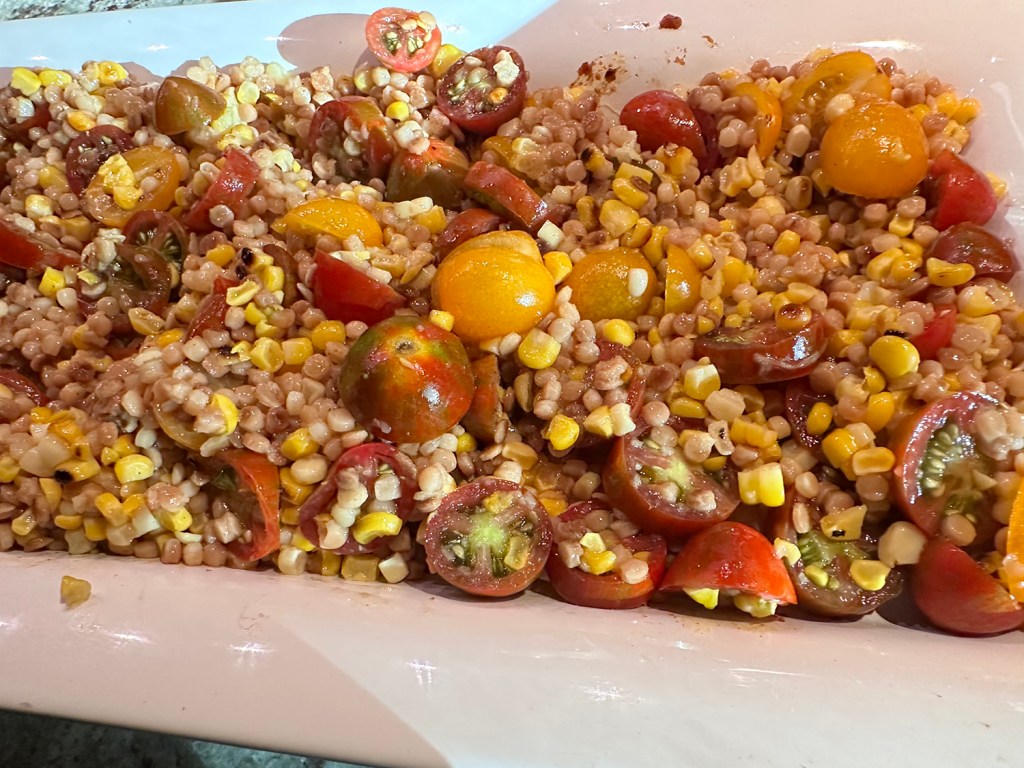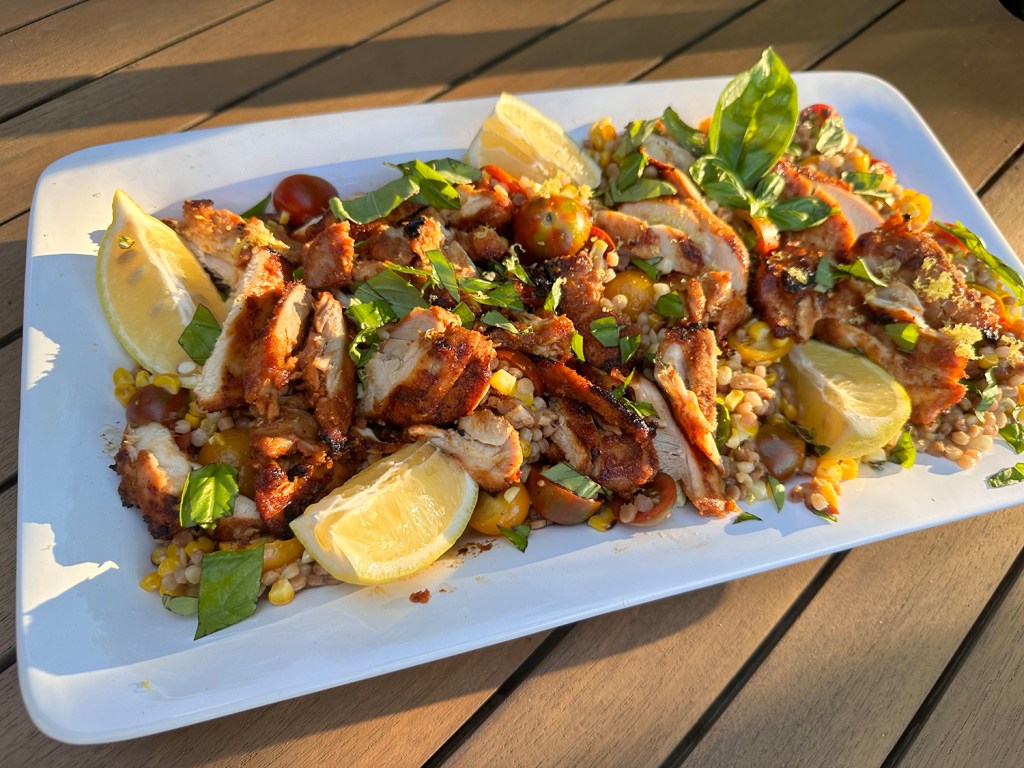A fantastic vegetarian riff on classic pasta carbonara, typically made with eggs, cured pork and cheese. The guanciale or pancetta traditionally used is replaced by garlicky, golden-brown zucchini that itself brings a meatiness to the dish. And there is no butter or cream used in making the satiny sauce.

The squash is sautéed and the pasta boiled, then the two are tossed with a mixture of umami-packed Parmesan, tangy pecorino Romano, rich eggs and starchy pasta cooking water. The resulting sauce is silky-smooth and creamy, yet light. Add lemon zest to the mix to bring fresh, zingy notes, as well as red pepper flakes for subtle heat.
Don’t add the egg-cheese mixture until the pot is off the heat. This will prevent the eggs from overcooking and ensure that the sauce’s texture is velvety smooth.
One major difference from the original recipe in Milk Street, was the sliced zucchini had to be portioned into 4 groups, each done separately in the 12-inch skillet, adding about 15 more minutes, bringing the total time to about one hour.
We also did not discard the cooked garlic (blasphemy!). Instead, we minced it and tossed it into the zucchini with the red pepper flakes. The Hubs mentioned at least three times that, for company, this would be a great first course to an Italian-themed dinner.
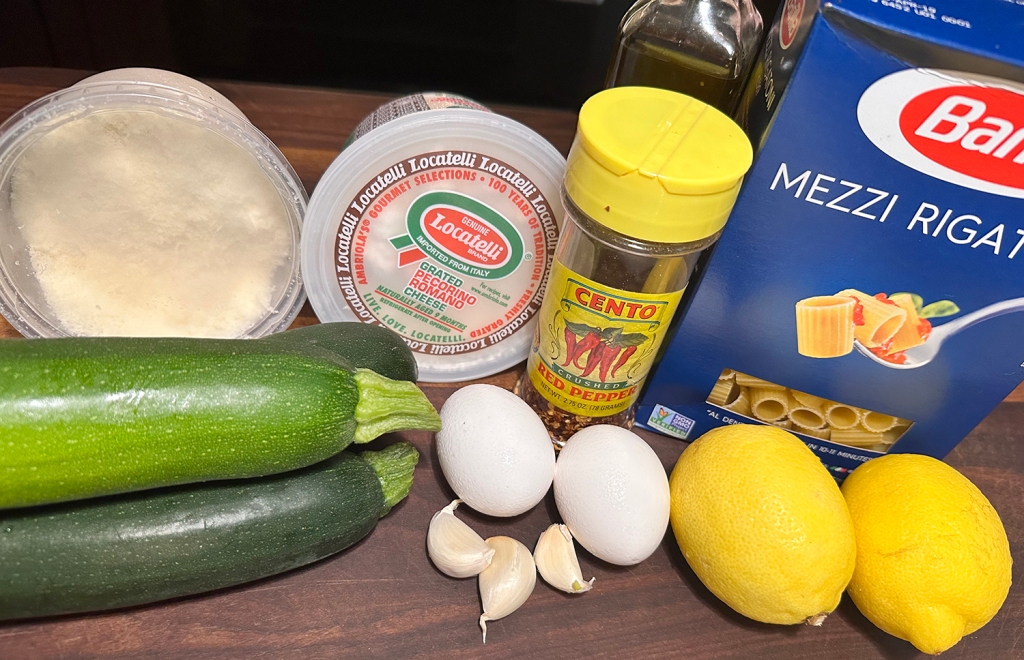
Zucchini Carbonara
Ingredients
- 1 large egg plus 1 large egg yolk
- 1 oz. pecorino Romano cheese, finely grated (½ cup), plus more to serve
- 1 oz. Parmesan cheese, finely grated (½ cup), plus more to serve
- 1 Tbsp. grated lemon zest
- Kosher salt and ground black pepper
- 3 Tbsp. extra-virgin olive oil, divided
- 2 large garlic cloves, smashed and peeled
- 1 1/2 lbs. small to medium zucchini, trimmed and sliced into ¼-inch rounds
- 1/4-1/2 tsp. red pepper flakes
- 1 lb. rigatoni, mezzi rigatoni or ziti



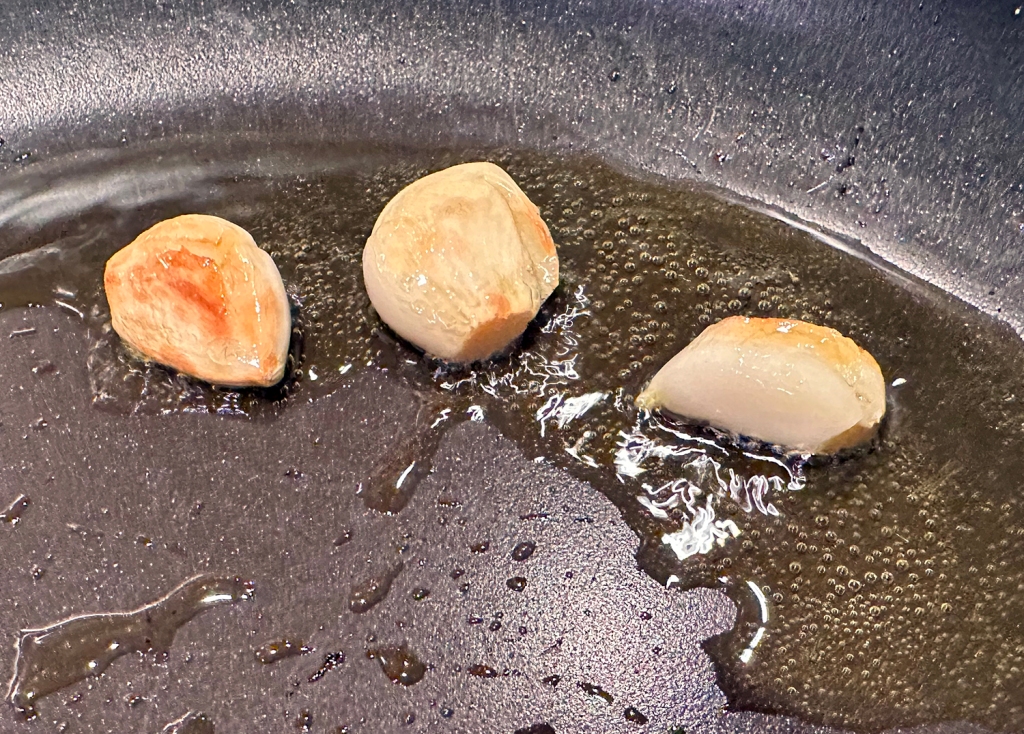
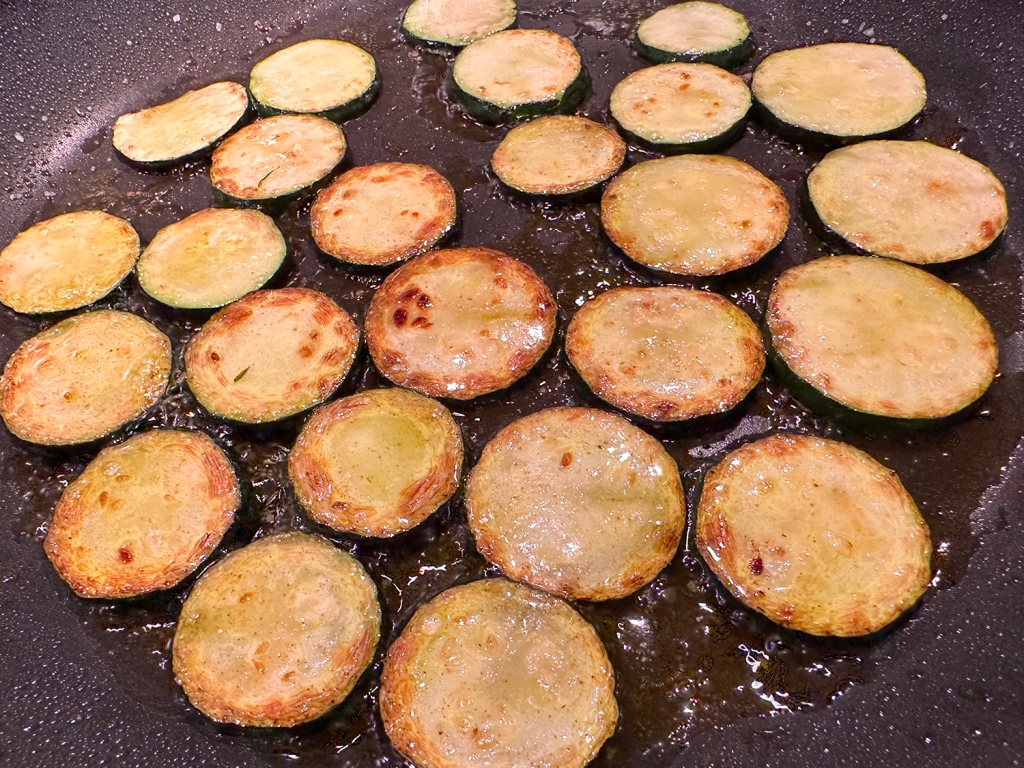
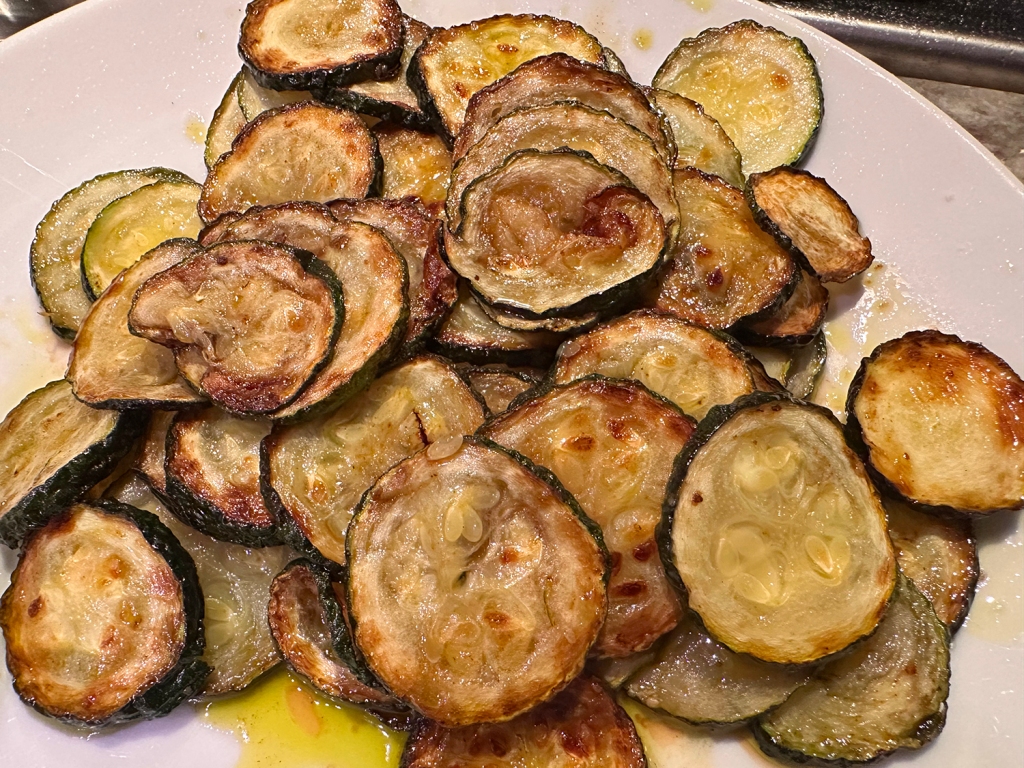

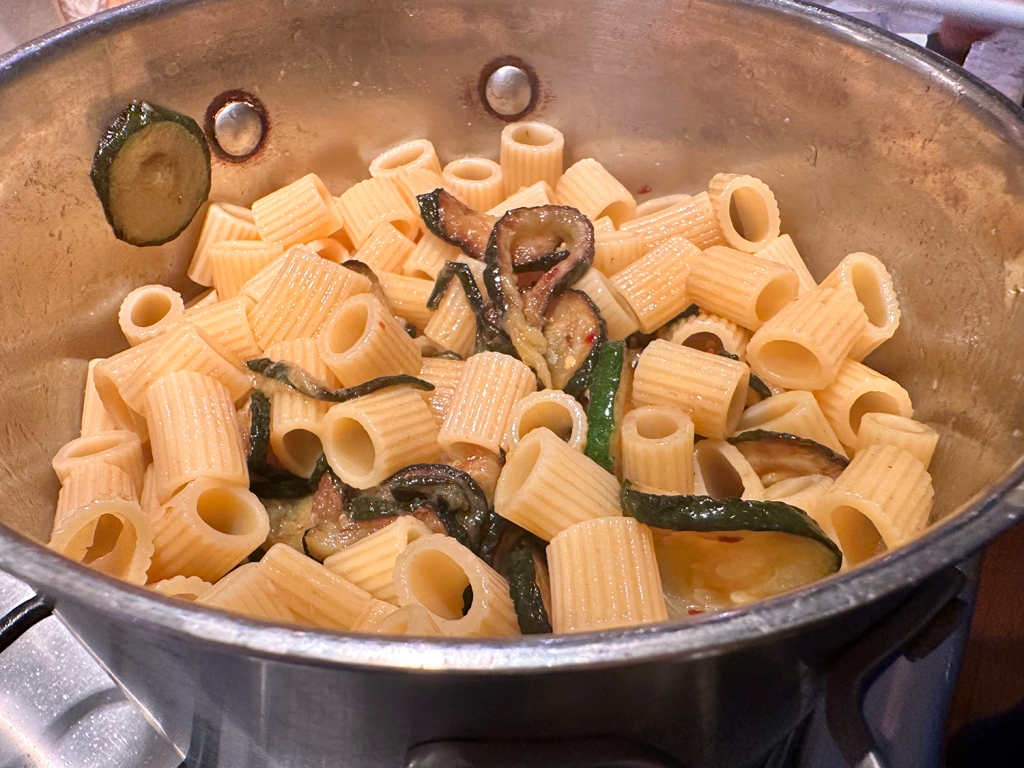


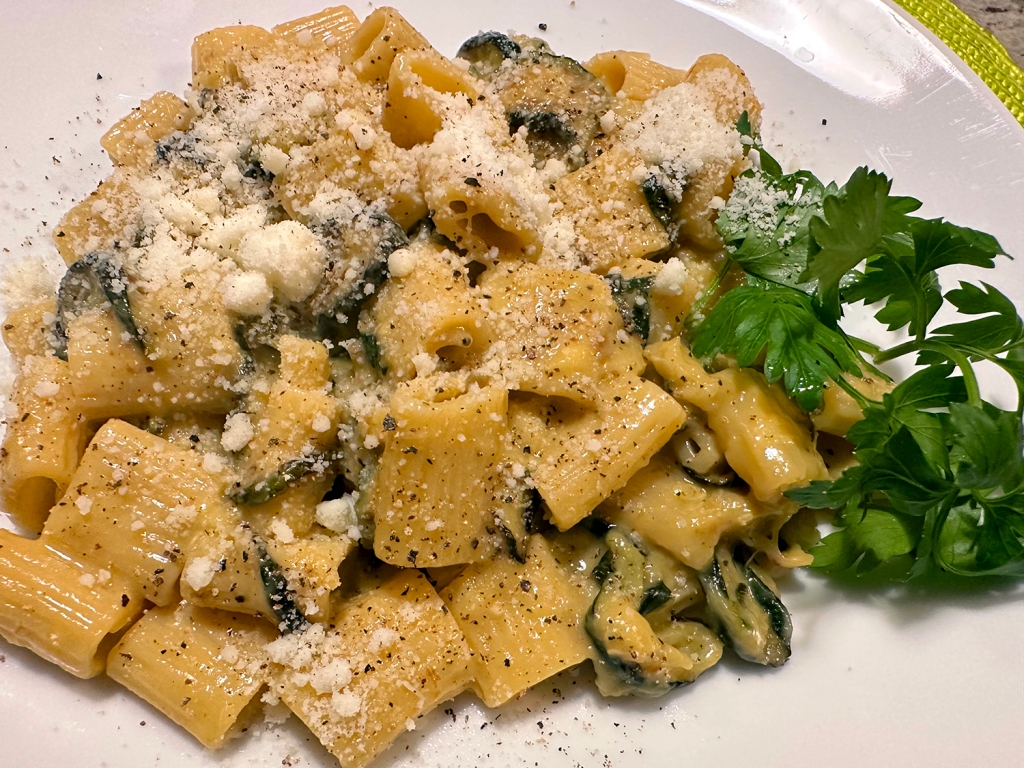
Directions
- In a small bowl, whisk together the whole egg plus yolk, both cheeses, the lemon zest and ½ teaspoon black pepper; set aside. In a 12-inch nonstick skillet over medium, combine 1½ tablespoons of the oil and the garlic. Cook, stirring occasionally, until the garlic is lightly browned, 2 to 3 minutes. Remove and discard the garlic, then add half the zucchini in an even layer and sprinkle lightly with salt. Cook, without stirring, until golden brown on the bottoms, 3 to 4 minutes.
- Stir the zucchini, flipping the slices, then redistribute in an even layer. Cook until golden brown on the second sides, another 3 to 4 minutes. Transfer to a plate. Add the remaining 1½ tablespoons oil to the skillet, then cook the remaining zucchini in the same way. (You may have to do this in more than two batches, it took us four.) Off heat, add the first batch of zucchini to second in the skillet. Stir in the pepper flakes and set aside.
- In a large pot, bring 4 quarts water to a boil. Stir in the pasta and 1 tablespoon salt, then cook, stirring occasionally, until al dente. Reserve about 1 cup of the cooking water, then drain. Return the pasta to the pot, then add ½ cup of the reserved pasta water and the zucchini. Cook over medium-high, stirring, until heated through, about 1 minute.
- Off heat, add the egg mixture; stir until the sauce thickens slightly and clings to the pasta and zucchini, 2 to 3 minutes. If needed, add reserved pasta water 1 tablespoon at a time to adjust the consistency. Taste and season with salt and black pepper. Serve sprinkled with additional black pepper and cheeses.
Recipe from Milk Street




